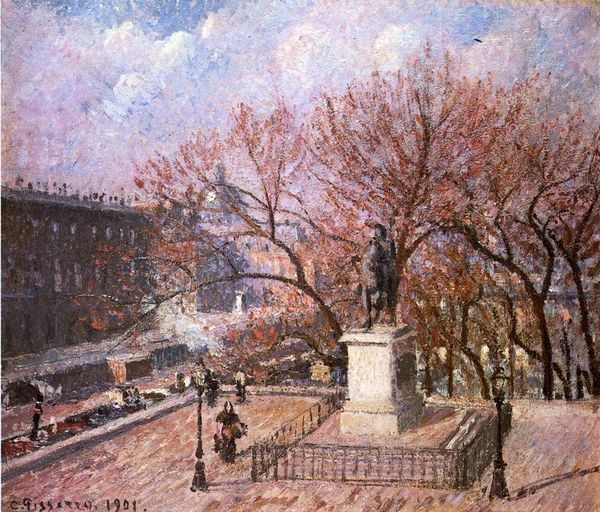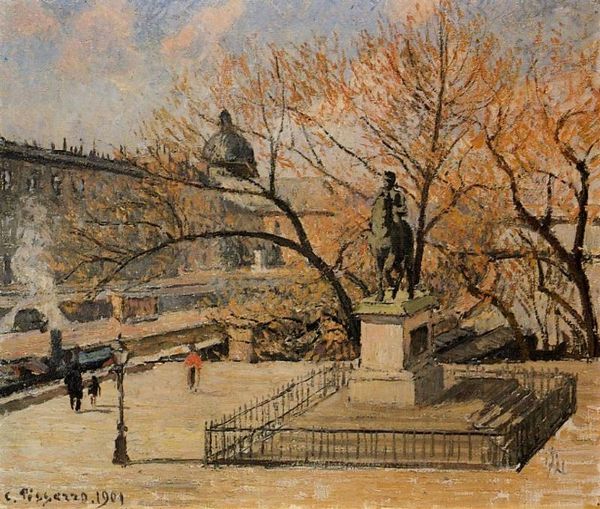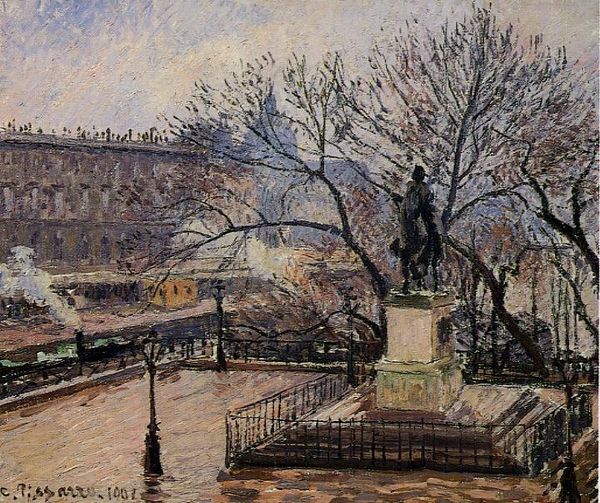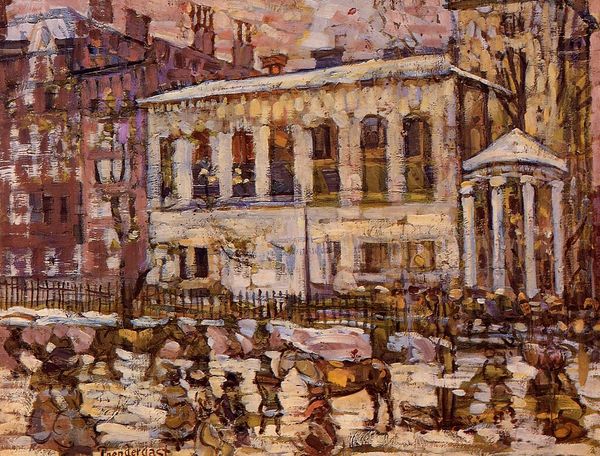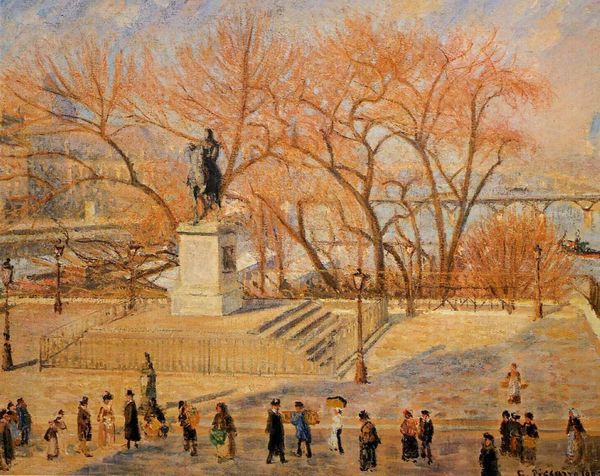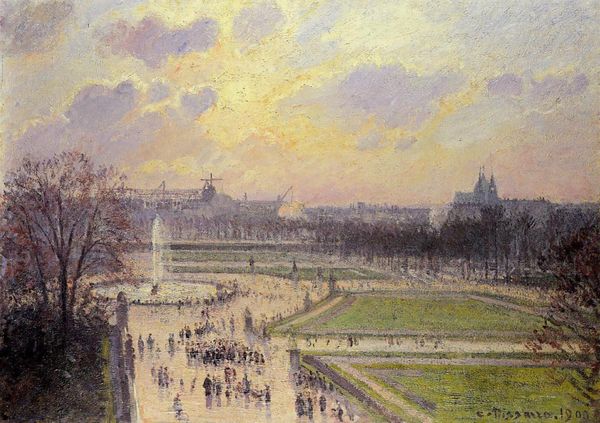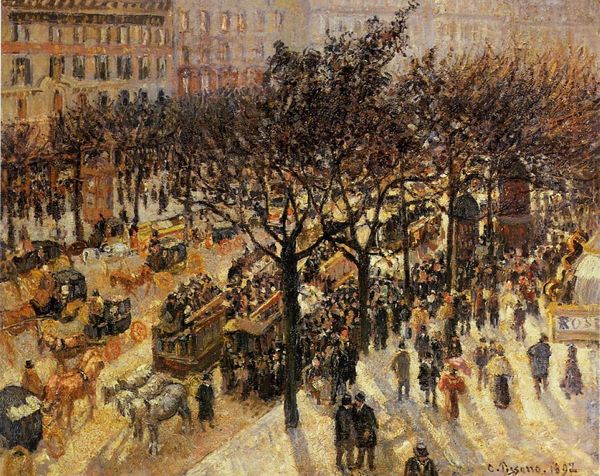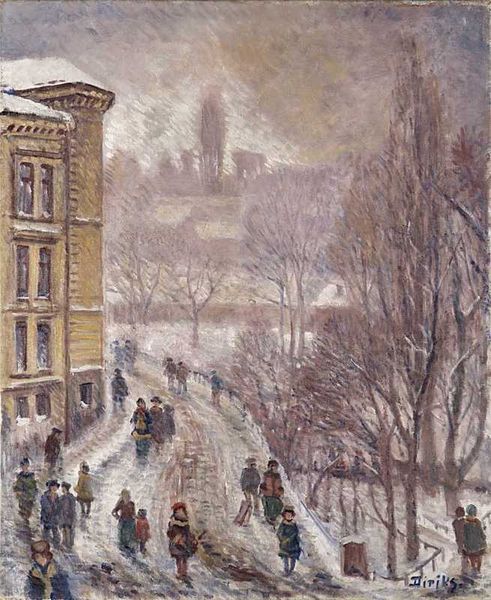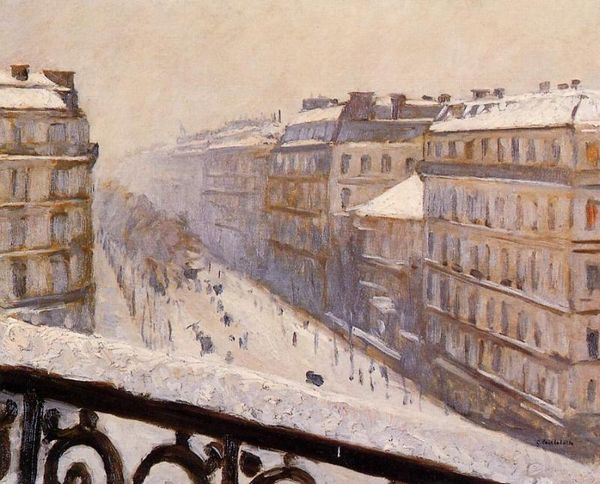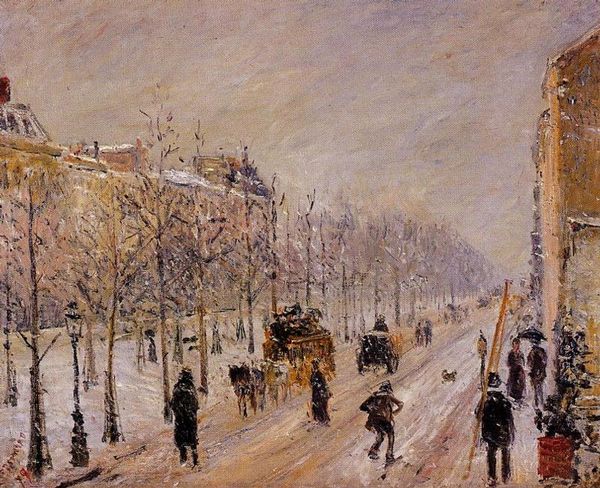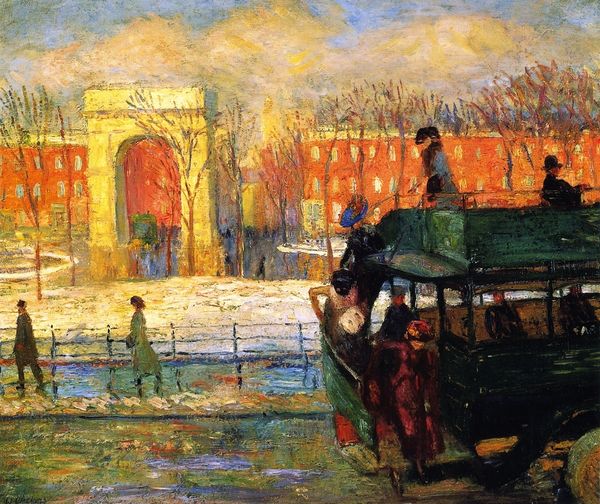
Dimensions: 46 x 38 cm
Copyright: Public domain
Curator: Camille Pissarro created this oil painting, “The Treasury and the Academy, Gray Weather,” in 1903. It captures a cityscape in muted tones, doesn’t it? Editor: It feels remarkably bleak, actually. The near-monochromatic palette and bare trees contribute to a rather somber mood, like a still from some pre-war drama set in Europe. Curator: Precisely, and Pissarro’s Impressionistic roots are clear, yet there's something about the way the figures are almost swallowed by the urban landscape. What might that say about the painting's social commentary? Editor: It emphasizes, perhaps, the individual's relationship to power structures within burgeoning metropolises. The faceless figures are representative of the anonymity felt by so many as they navigate institutions such as those depicted—the Academy, representative of traditional power, and the Treasury of more modern economic influences. Pissarro frequently rendered the disenfranchised within similar settings. Curator: And we can’t overlook how the “gray weather” impacts the viewing. Beyond simple observation, did the artist utilize atmospheric elements to frame or influence these perceived interactions and tensions? Editor: Without a doubt. Weather in his paintings is rarely a neutral element. The diffuse light diminishes contrasts, softening social divisions. Here it might hint at a leveling effect, where external conditions momentarily diminish, say, visible economic disparities. Curator: I find that a valuable observation about its symbolism! Also consider the period—France was at a crucial point in its own history. To portray the people and locations amidst an ongoing transformation reflects a society struggling to embrace progress, equality, even hope, when burdened by history. Editor: That's quite insightful. This also prompts me to think of it as Pissarro's reflection on modernity—the blurring lines between established hierarchy and more "progressive" values, or whether such constructs are an illusion. Curator: Yes, the painting resists simple categorizations. It's not just Impressionism but a precursor of later modern art trends reflecting this sort of sociopolitical awareness. Its enduring quality is this subtle, yet challenging, interrogation of power, place, and identity in the modern world. Editor: Thank you; I hadn’t considered it within such a pointed, political lens. Curator: Always glad to offer new perspectives and facilitate new dialogues on the powerful narratives imbedded within artworks.
Comments
No comments
Be the first to comment and join the conversation on the ultimate creative platform.
